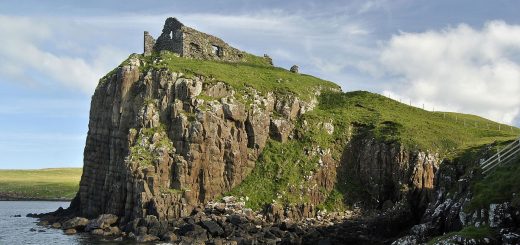Robert Burns and Folklore
Robert Burns was born on the 25th January 1759 during the ‘Age of Enlightenment’ but also in a time when the country superstitions and supernatural beings were an integral part of folk belief. The landscape of Burns’ was one where the natural rhythms of nature were much more intertwined in the day to day of working life. Some of his poems show a snapshot of country traditions and beliefs at the time, imbued with his sense of humour and satire.
 Burns was familiarised with tales of the supernatural and folk belief through Betty Davidson, an older cousin of Robert’s mother who often stayed with the family when Robert was a young boy. Betty had a large collection of folk tales and songs about the supernatural and recounted many of these tales to Robert which fired his imagination from an early age.
Burns was familiarised with tales of the supernatural and folk belief through Betty Davidson, an older cousin of Robert’s mother who often stayed with the family when Robert was a young boy. Betty had a large collection of folk tales and songs about the supernatural and recounted many of these tales to Robert which fired his imagination from an early age.
Burns was sceptical about the supernatural and pokes fun at some of the country beliefs of his contemporaries in his poems. However he admits in a letter to Dr Moore that those early tales of childhood:
“…had so strong an effect on my imagination that to this hour, in my nocturnal rambles, I sometimes keep a sharp look out in suspicious places; and though nobody can be more sceptical than I am in such matters, yet it often takes an effort of philosophy to shake off these idle terrors”
We should also remember that although it was the ‘Age of Enlightenment’ it was a time not long after the horrors of witchcraft persecution, when thousands of women were executed (In Scotland this meant burning) on flimsy evidence fuelled by religious paranoia. The witchcraft act was repealed in 1736 in Scotland – only 23 years before Roberts’ birth – and the last trial and execution was in 1727 (some sources say 1722). The fear of the Devil, witchcraft and the supernatural was still very real for many people. The Calvinistic church also had an influence on these beliefs as the Devil and his minions were placed in the role as a direct and present threat to God’s word.
Burns produced a vast amount of work in his short life, imbued with his humour and sharp wit that parodies some of the characters and institutions current in his lifetime. Four of his poems deal directly with the supernatural: Tam o’ Shanter, Death and Doctor Hornbrock, Halloween and The Address to the De’il.
Tam O’ Shanter is probably Burns’ most famous and well loved poem influenced perhaps from those early tales he heard from Betty Davidson. The poem was written to accompany a sketch of the ruined Kirk at Alloway by Francis Grose, which was to appear in a book of Scottish antiquities. It is essentially a narrative about a farmer’s meeting and escape from a coven of witches on a stormy evening when returning home from Ayr Market, after perhaps one too many ales.
Halloween is really a discourse on the practices of the countryfolk on this ancient festival and as such is an important snapshot of folk tradition in Lowland Scotland in 1785.
Death and Dr Hornbrock is an imagined meeting of the poet and and death, portrayed as a gaunt skin covered skeleton, who laments the activities of a quack doctor.
The Address to the De’il is a poem that pokes fun at folk beliefs about the Devil and his powers under a common poetic framework of the time.
Ayrshire has many locations associated with the life of Burns that are open to the Public. The ruined Kirk at Alloway is still there as is the Brig of Doon, although you may have to be as full as Tam O’ Shanter was to witness anything macabre. The old Kirk does have a reputation for being haunted, most likely from its association with the poem. Burns Cottage at Alloway (where Robert Burns was born) still exists and is open to the public as a museum. There is a Creative Burns exhibition at the Dick Institute in Kilmarnock where some of his original manuscripts – including Halloween and Tam O’ Shanter – can be seen along with contemporary artists’ interpretations of Burns.
2009 was the 250th anniversary of the birth of Robert Burns: Scotland’s Bard. There were a number of events and exhibitions in Scotland throughout the year under the banner of ‘Homecoming Scotland 2009’.




Great and fitting tribute to
Great and fitting tribute to a great writer. Great job condensing so much in so little space.
Thanks Mauro.
The folklore
Thanks Mauro.
The folklore aspect is only a small part of his work although he does make references to it in other poems. I must admit when I first read Burns many years ago I missed the point, it’s only when you start reading more you realise his genius. I managed to get to the Creative Burns exhibition and am fortunate enough to be playing at one of the music festivals that are part of the celebrations.
Tam O’ Shanter has been on the site since it was launched,
Re: Robert Burns and Folklore
Still a lot of things going on for the 250 year celebration: The Scottish Poetry Library have published a book called Addressing the Bard (twelve contemporary poets respond to Robert Burns) which is worth having a look at if you like Burns, and Poetry (obviously)
Re: Robert Burns and Folklore
I love this interpretation of Burns
http://www.youtube.com/watch?v=vZ7oYCx6tBw&feature=related
dodgy tash though!